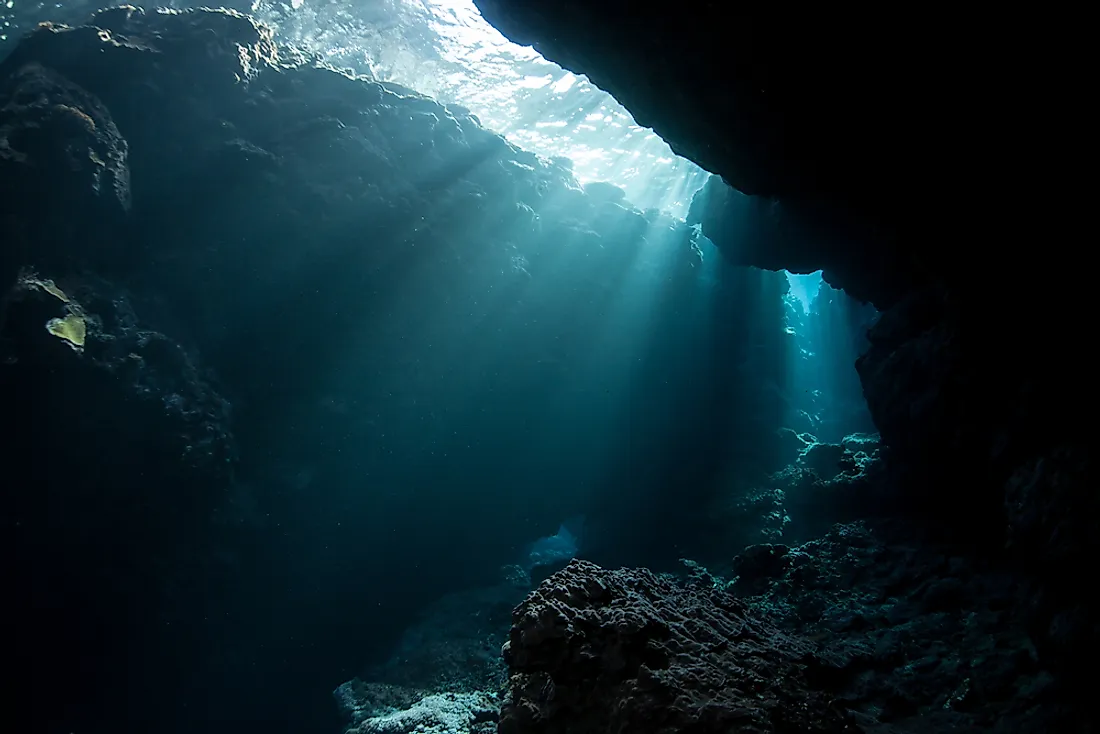Which Ocean is the Deepest?

The Pacific Ocean is the deepest ocean in the world, with an average depth of 4,820 m (14,020 ft). Other than being the deepest ocean overall in the world, the Pacific Ocean has the deepest point in the world. The deepest point in the planet, found in the Mariana Trench, is at nearly 11,000 m (35,797 ft). It is also the largest ocean by surface area. It covers a total surface area of approximately 165,250,000 sq km (63,800,000 square miles), translating to a total of 46% of earth’s water surfaces. The area is larger than all of earth’s land combined. The name Pacific was coined from the Portuguese word “Pacifico,” which means peaceful. It was named “Mar Pacifico” by Ferdinand Magellan because during his circumnavigation trip in 1521 he found the ocean to be very peaceful.
Geography of the Pacific Ocean
The equator divides the Pacific Ocean into two portions: the Northern Pacific and the Southern Pacific. The ocean separates Asia and Australia from the Americas. It stretches from the Arctic region in the north to the Antarctic in the south.There are a number of seas that lie along the western margin of the Pacific. These seas include East China, Philippine Sea, East Sea, South China Sea, Tasman Sea, and the Sulu Sea. The Torres Strait and Strait of Malacca interconnect the Pacific and the Indian Ocean to the west. On the east, the Strait of Magellan and the Drake Passage join the Pacific Ocean and the Atlantic Ocean. On the northern side, the Bering Strait links the Pacific Ocean to the Arctic Ocean. The Pacific has the highest number of islands.
Features of the Pacific Ocean
There are over 25,000 islands in the Pacific. Some of the countries, such as Japan, consist of approximately 3,000 islands while Indonesia is made up of approximately 17,508 islands. There are also a number of Archipelagos in the ocean. The most popular are the Hawaiian Archipelago and Fiji Archipelago. Indonesia is the largest archipelagic state in the world, thanks to the numerous islands forming it. The Challenger Deep in the Mariana Trench is the lowest point on the earth’s crust. Volcanic activities are popular in the Pacific. Approximately 75% of the volcanoes in the world are experienced in the Pacific Basin. The volcanic activities result in frequent earthquakes and Tsunamis in the area. Most of the world’s atolls are also found in the ocean.
Water Characteristics and Climate
The climate of the Pacific Ocean varies from the North Pacific to the South Pacific. The temperature of the waters depends on the location and season of the year. The temperature gets cooler as you move further from the equator. Closer to the poles, the water temperature is usually around the freezing point. Generally, sea life is more abundant around the equator due to the warm temperatures of the water. Popular sea life in the warm waters of the Pacific includes snails, dolphins, and fish. In the subtropical and tropical Pacific, the El Nino southern oscillations are responsible for the weather patterns. In the western Pacific, the monsoon winds blow over the waters from the Asian Landmass. The tropical cyclone is usually observed during late summer in the South of Mexico.
Oceans by Average Depth
| Rank | Ocean | Average Depth (m) |
|---|---|---|
| 1 | Pacific | 4,820 |
| 2 | Southern | 3,992 |
| 3 | Indian | 3,960 |
| 4 | Atlantic | 3,646 |
| 5 | Arctic | 1,038 |











